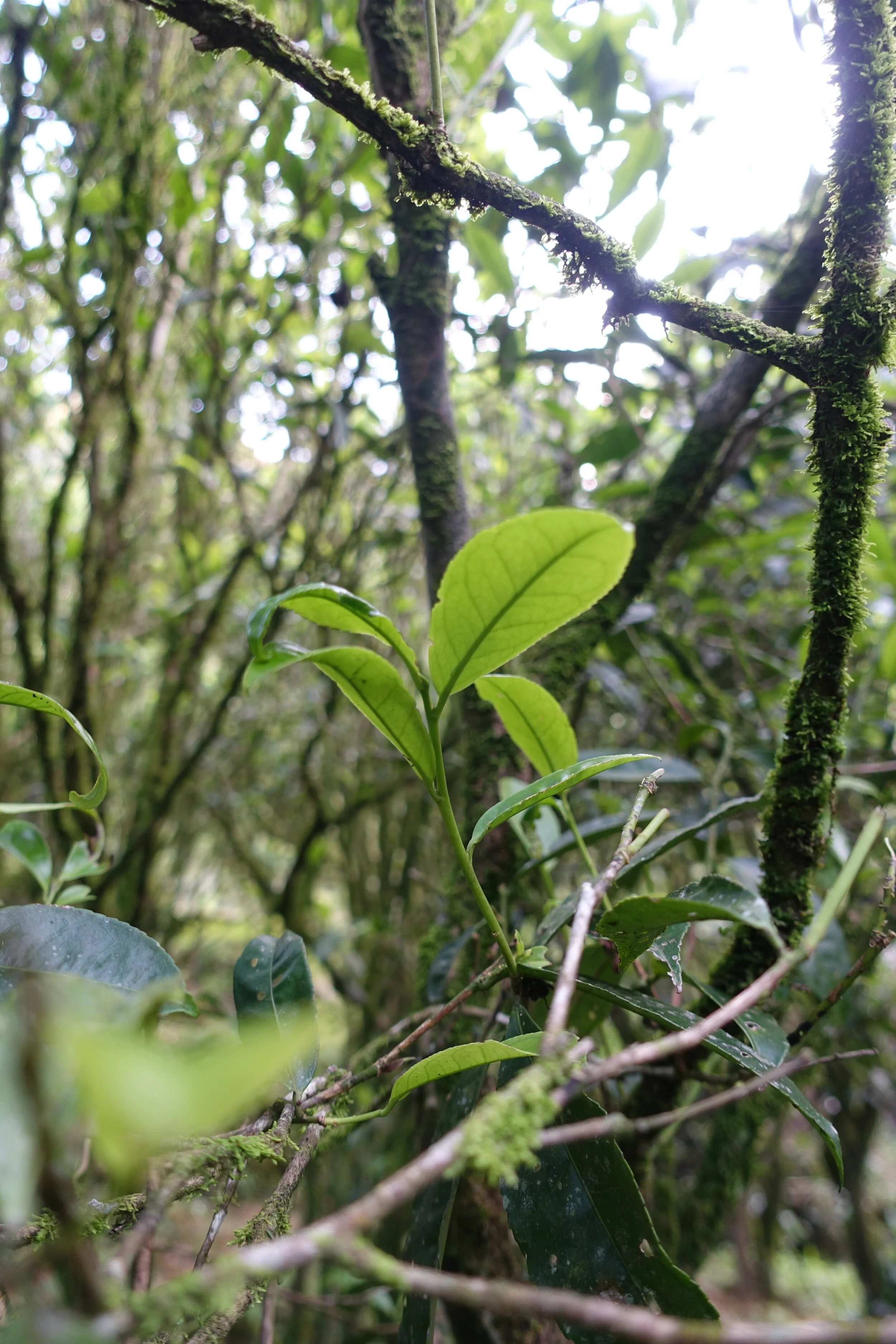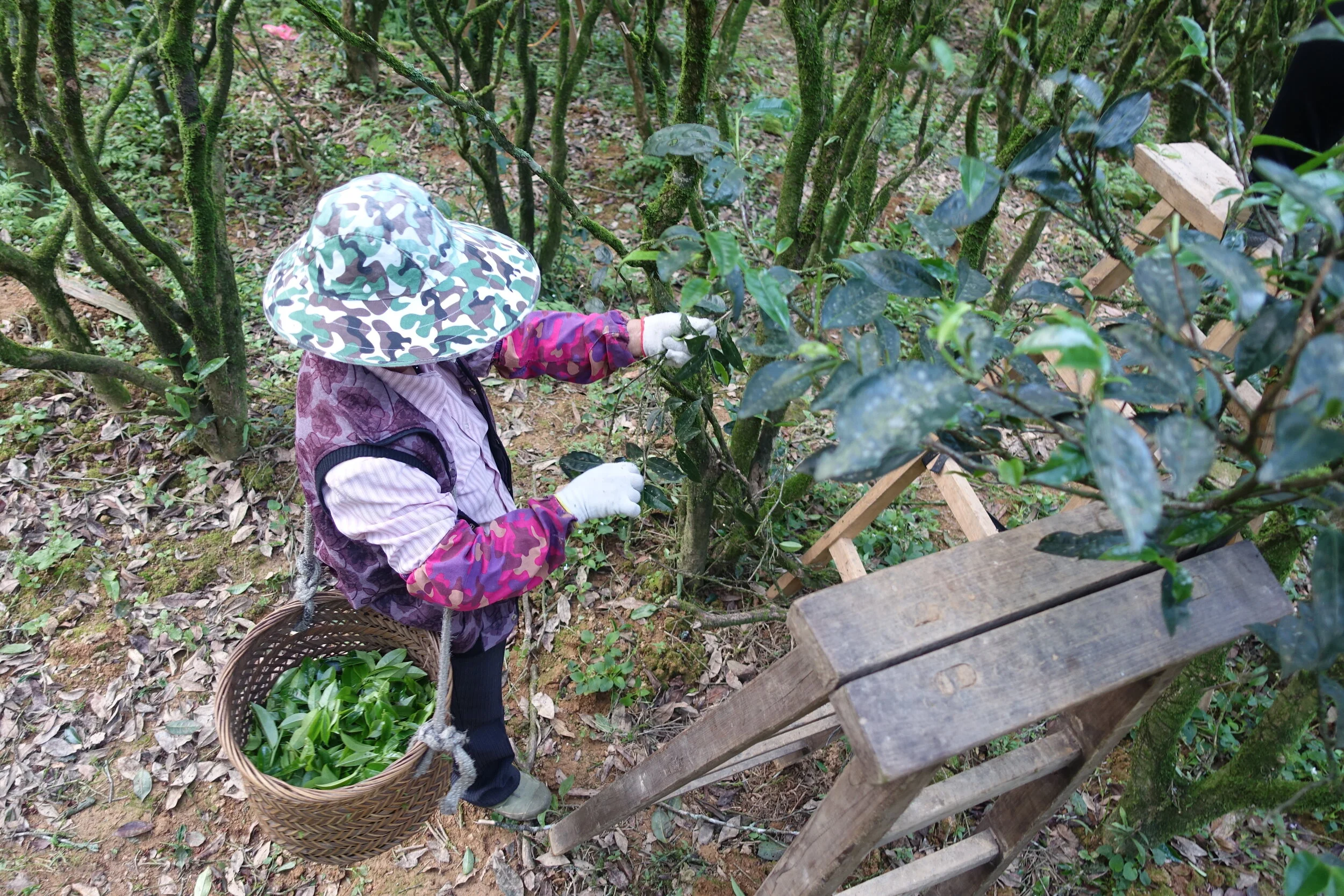We talk a lot about the importance of location to historically famous Chinese tea and the tea industry as a whole. The more detailed the location information you have on a tea, the deeper you’ll be able to understand the history, the land, and the significance of that specific tea. As connoisseurs and preservers of an ancient craft, we value this understanding across all the teas we source and consume.
To really understand the importance of the actual earth that the tea grows in, we’ve adopted a wine term into the tea industry: terroir. We find a lot of similarities between the cultivation and harvesting of tea and wine, so it is fitting to share similar words in describing their environments. There are also Chinese words that help us better explain this concept of tea as a product of the land and generational history. Zheng Chan Di means true origin, which touches on the aspect that we can’t just talk about any land or terroir with a tea, it must be THE terroir for a specific tea. This helps us build an understanding of hierarchy as it relates to value of tea. Another term often used in Chinese is Feng Tu. Feng Tu is the combination of terroir and culture. There’s no hierarchy in this concept, it’s more like when a particular group acts in a certain way based on their environment. For example, how Sichuan people really like spicy food, and other regions don’t in the same way.
All of these terms help us better understand tea through location, history, and place in the global market.
What Does Terroir Mean?

Officially, the noun terroir (pronounced: terˈwär) is defined as “the complete natural environment in which a particular wine is produced, including factors such as the soil, topography, and climate” (Oxford Languages). It comes from the French word for land and is used to describe the qualities of the land itself. Some factors that play into terroir are the soil; climate; rainfall; sun exposure; terrain; elevation; surrounding plant life; and historic significance. Sounds like a lot, right? It is, but it’s so important to the idea of tea at large. All of these factors play a part in how a tea tastes and how the tea is valued on the market. Just how oranges grown in Florida taste different than oranges grown in California — teas take on the same idea.
Terroir Hierarchy
Top terroir regions for tea are the most sought-after and historically significant for each specific style of tea. Just as with wine, certain teas are most authentically harvested from specific regions. Terroir allows us to have a hierarchy system of value, that’s been deep rooted in history. Terroir defies time, We’ve inherited this from history, and can’t change which terroir is prized on a whim. This adds a lot of weight to it on a cultural level. Relating back again to the wine industry, it’s the same hierarchy idea as cru. There is a market value difference between grand cru, premium cru, first cru, etc. This system reminds us that the finer things we consume are the product of the land. It’s a generational experience that transcends time.
It’s important to note, that terroir relates to the land that it grows in and the natural elements - not how we grow or change the tea with human intervention. The only human intervention that goes into the concept of terroir is the cultural significance we give these locations that have had prime natural environments for generations. Any kind of crop altering, or any other element humans might do is not considered part the terroir.
Tea Loves A Complex Environment

Tea thrives in what we call a “complex” environment. It grows best in locations that have wide changes in temperature throughout the day; changing patterns of cloud coverage and sun; and very high elevation. This style of challenging environment leads to complicated metabolisms which leads to complicated enzymes which changes how we experience the tea after processing.
Generations ago, many of the best (most complex) plots of land were established as top terroir for tea growing. For example, a lot of historic top terroir in China in the most famous tea regions are on the south, east, or the southeast facing sides of the mountain. Teas from these plots are still the most prized due to their terroir and history.
Examples of Terroir and Tea Relationship
A great example of the relationship between terroir and tea is with Wu Yi Shan Yan Chas. Also known as Rock Wu Longs, this category of tea relies heavily on the terroir it’s grown in. The mantra for Yan Cha is “rock bone and floral fragrance.” While all Wu Longs are floral, the "rock bone" of Yan Cha refers to a highly desired "molten stone" mouth feel. This specific taste is a product of the rocky terrain and soil of the land in Wu Yi Shan, called Danxia Landform.
Like all historically famous teas in China, the specifics of the locations are meticulously detailed. The word Zheng Yan, which translates to True Cliff, is referring to the core part of the Wu Yi Shan. All of the UNESCO Wu Yi Shan Heritage site is 27 square miles. Even though this region is so small, there are even more divisions of plots and value associated with the most specific pieces of land in this small area.
All of Tea Drunk’s Yan Chas come from this core terroir region. From within the Zheng Yan terroir we have teas from Shi Zi Feng, Guan Yin Yan, Jiu Long Ke, San Yang Feng, Liu Xiang Jian, and Niu Lan Keng (the crown jewel).
Another example is Bai Ye, a Dan Cong (Phoenix) Wu Long. This is an instance where we have the same cultivar, but grown and harvested in different locations. Similar to the relation between Chardonnay and Chablis in wine. If you taste them side by side, you’ll see the Bai Ye from Zhong Xin Yan is more elegant with a higher clarity. This is because Zhong Xin Yan is a colder climate than Feng Xi. Our Bai Ye from Feng Xi is more peach forward, with slightly more aggressive tannins.
These are just a few examples of how tea is changed by terroir. We hope that by understanding the relationship that tea has to the earth it is grown in, we’re able to help you understand how nuanced and rare experience high quality tea truly is. Every sip you drink is a piece of the earth and location where the tea came from, as well as the humans who crafted it. It’s unique and astonishing what we are able to gather from the earth and our relationship to it should be deeply respectful.

